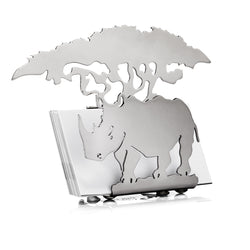Save the Rhino
Saving Africa's Rhino with WWF
During the last few years South Africa has experienced an alarming increase in rhino poaching, triggered by the illegal demand for rhino horn. The brutal rhino horn trade is run by well-resourced, sophisticated, international criminal syndicates. If WWF and its partners had not been investing in rhino conservation over the past several decades, the situation could have been far worse. Over the past two decades both white and black rhino populations have increased considerably as a result of conservation efforts. Current levels of poaching threaten to negate these gains, however, these efforts have put us in a far better position to weather this storm. WWF's Black Rhino Expansion Program has been at the centre of these efforts. Since 2003 seven new black rhino populations have been created on about 150,000 hectares of habitat. Nearly 120 black rhino have been translocated to these sites. WWF galvanizes its efforts around a five pronged approach aimed at strategic parts of the poaching value chain.
WWF will continue to improve its understanding of trade dynamics in importing countries and to find ways to influence demand; improve bilateral co-operation between South Africa and importing countries such as Vietnam; improve the judicial and forensic processes (through capacity development as well as expert and hardware support); build community buffers around key rhino populations; and continue to build resilient rhino populations by improving management of existing populations as well establishing new founder populations in secure locations.
Carrol Boyes' campaign helps support WWF-SA and its Rhino Conservation Work. By supporting WWF's rhino conservation work, we help to stop the criminal elements plundering our national heritage and endangering a global asset. Together, we can help keep Africa's iconic rhino alive.
Carrol Boyes will donate 25% of the proceeds of our Rhino products to WWF and its rhino conservation work, and helping to keep Africa's iconic rhino alive. Click here to view the range.
To find out more about WWF, please click here.

